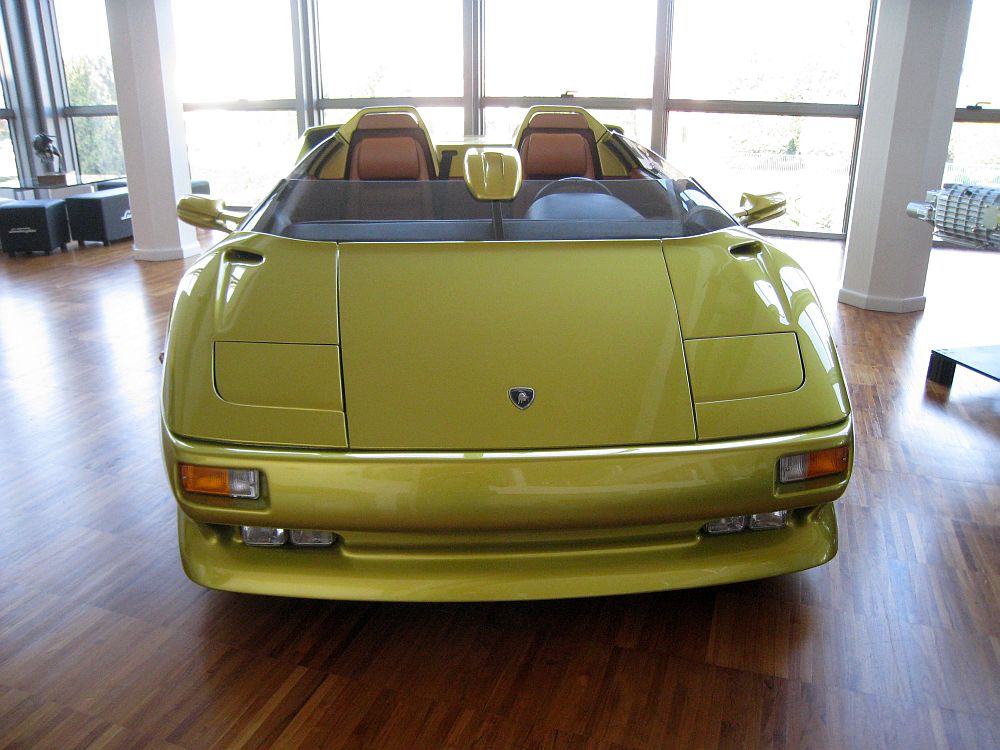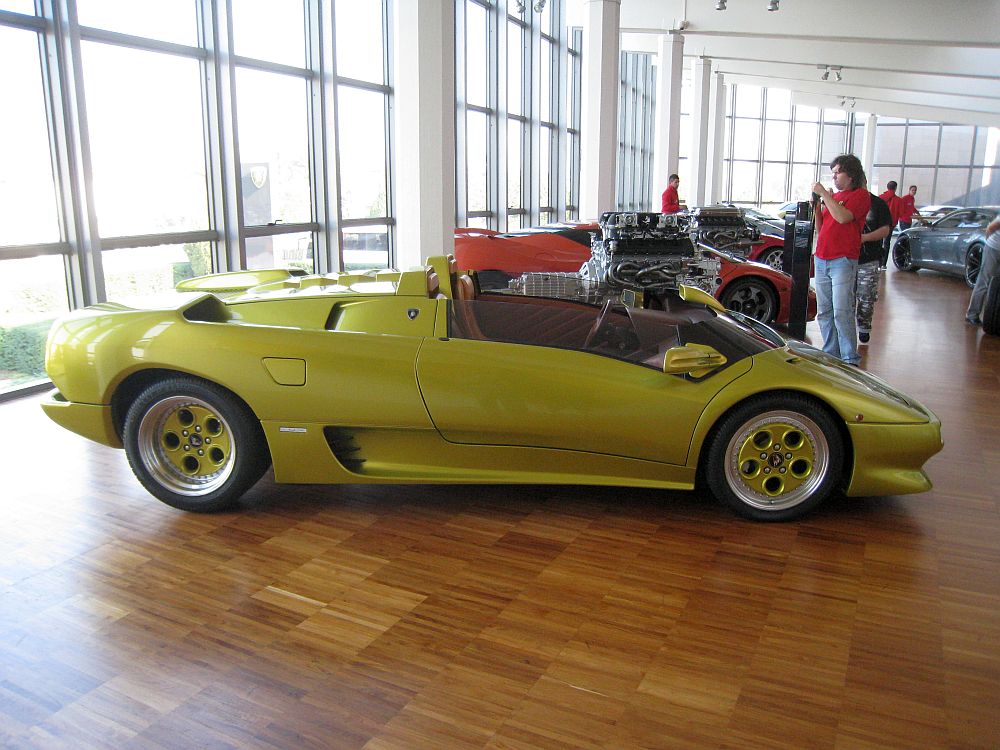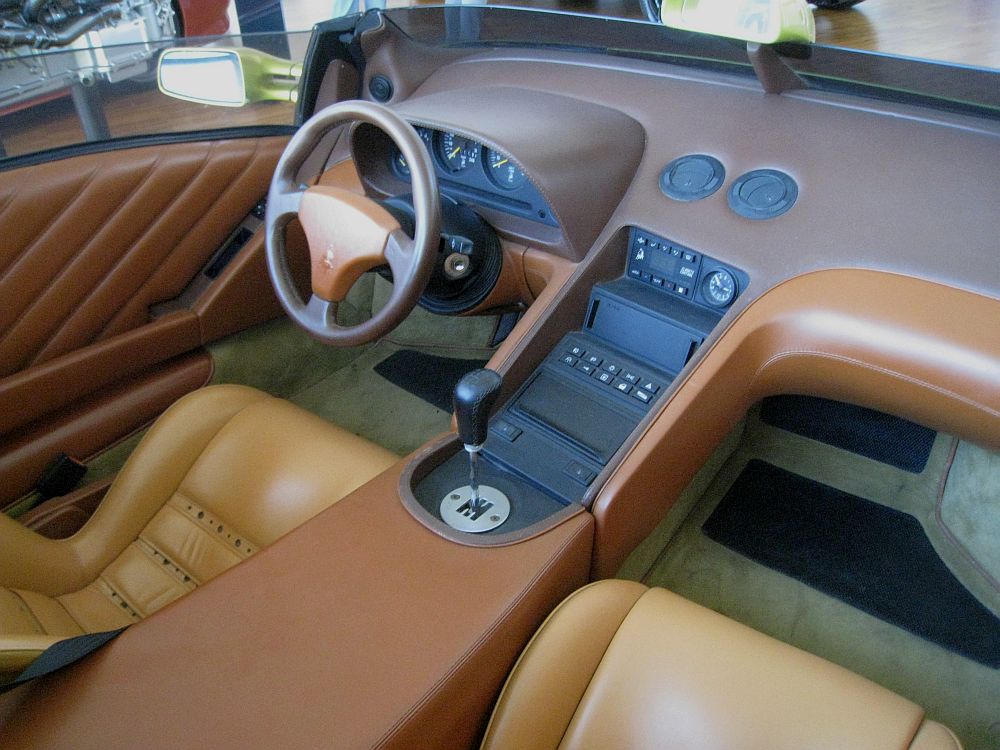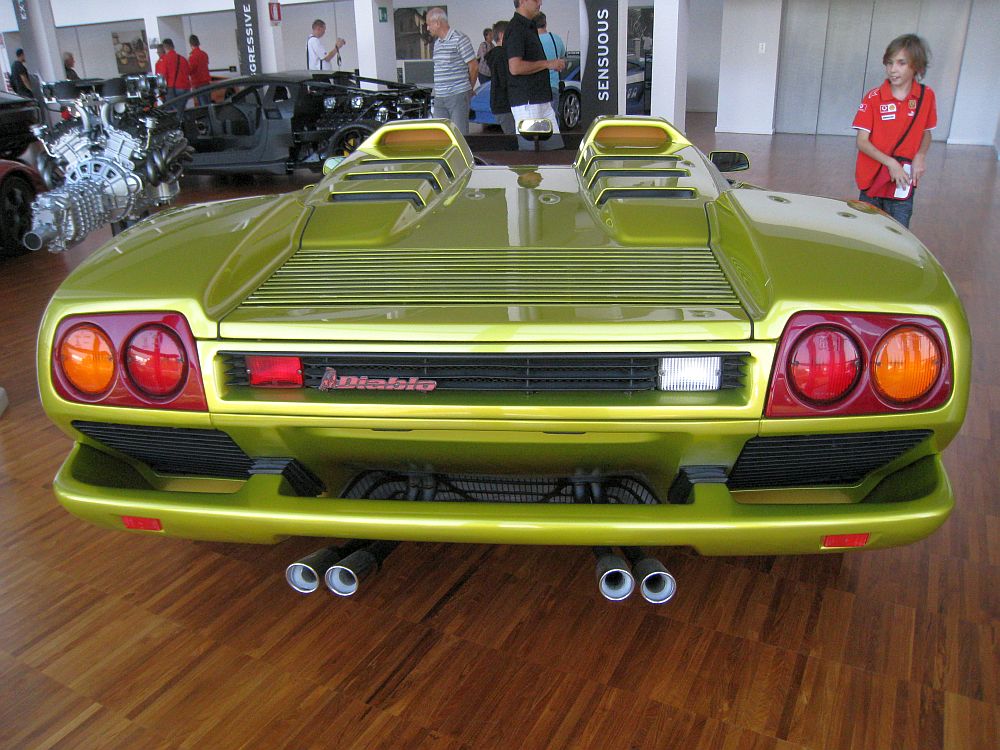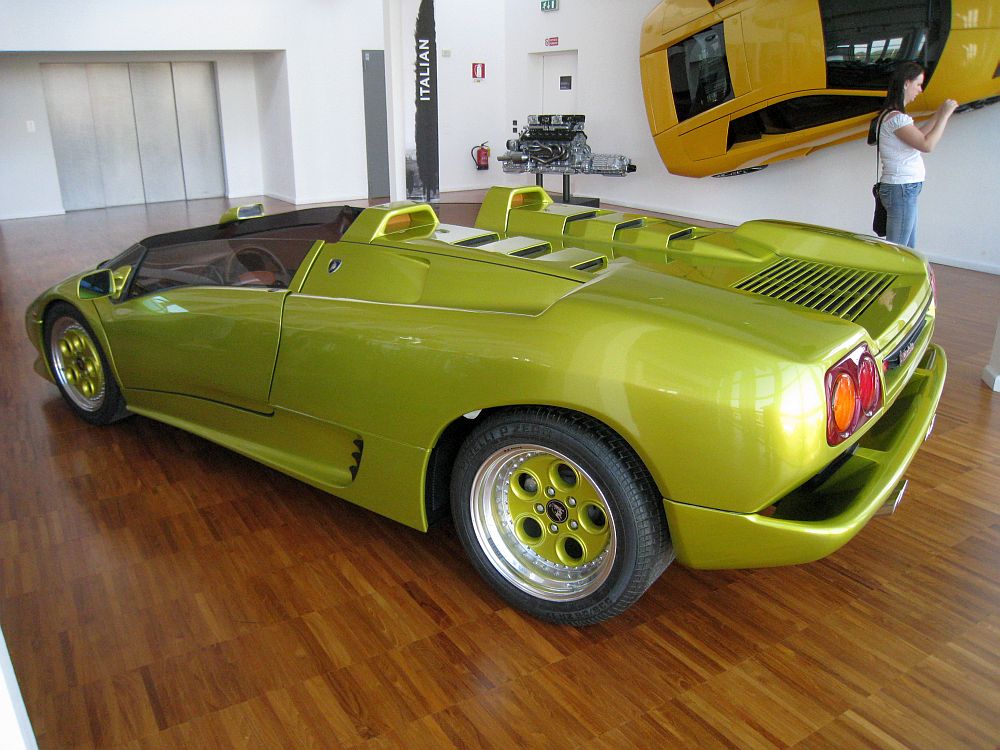Description
The Lamborghini Diablo Roadster Prototipo, unveiled in 1992, was the stunning open-top prototype that previewed what would later become one of Lamborghini’s most dramatic and desirable models—the Diablo VT Roadster. It was a design and engineering experiment that showed how Lamborghini could merge the brutal power and theatrical styling of its flagship V12 supercar with the freedom and emotion of open-air driving. The Roadster Prototipo was not merely a show car; it was a fully functional concept that marked a pivotal moment in Lamborghini’s transition from the raw excess of the 1980s to the refined supercars of the 1990s.
The Diablo Roadster Prototipo was based on the early Diablo coupe, which had debuted two years earlier in 1990 as the successor to the legendary Countach. Designed under Chrysler ownership, the Diablo was already a technological and aesthetic leap forward for the company, capable of over 320 km/h (200 mph) and more civilized than any Lamborghini before it. The idea of an open-top version came soon after its launch, both to showcase Lamborghini’s engineering prowess and to explore the growing market for high-performance convertibles.
The Roadster Prototipo’s design was once again overseen by Marcello Gandini, the visionary behind the Miura, Countach, and original Diablo. His challenge was to transform the Diablo’s aggressive wedge shape into a convertible without compromising its proportions or structural integrity. The result was one of the most striking open-top designs ever produced. The car’s silhouette remained unmistakably Diablo—low, muscular, and angular—but the roofline was replaced by a removable carbon-fiber targa panel that could be stored over the engine cover. This gave the car a sense of freedom and openness while retaining its structural rigidity.
The prototype’s bodywork was heavily modified compared to the standard Diablo. The engine cover featured prominent twin air intakes to feed the mid-mounted V12, while the rear deck was re-sculpted with new aerodynamic lines and integrated buttresses behind the seats. The engine bay itself was more exposed, allowing onlookers a clearer view of the mechanical heart of the car. The front bumper and side skirts were reshaped for improved airflow, and the pop-up headlights were retained from the early Diablo design, preserving its dramatic appearance. Finished in a deep metallic red with a cream leather interior, the Roadster Prototipo exuded both elegance and menace—a balance that perfectly captured Lamborghini’s design philosophy.
Underneath, the Roadster Prototipo used the same powertrain as the standard Diablo: a 5.7-litre naturally aspirated V12 engine producing 492 horsepower at 7,000 rpm and 580 Nm of torque. Paired with a five-speed manual gearbox, the car was capable of sprinting from 0 to 100 km/h (62 mph) in around 4.5 seconds and achieving a top speed of over 320 km/h (200 mph). The combination of immense performance and open-top exhilaration made it one of the most exciting concepts of its era. The chassis was a reinforced version of the standard Diablo’s tubular steel spaceframe, with additional strengthening in the sills and rear bulkhead to offset the loss of the fixed roof.
Inside, the Prototipo blended luxury and raw power in typical Lamborghini fashion. The cabin was trimmed in fine Italian leather with a dashboard layout almost identical to the standard Diablo but reworked for improved ergonomics. The driving position was low and commanding, framed by the iconic scissor doors and the view of the massive rear haunches. With the roof panel removed, the sound of the V12 filled the cockpit, creating an immersive driving experience that made the car feel even more alive.
Although the Diablo Roadster Prototipo was a fully drivable vehicle, it remained a one-off showpiece during its early years. It made its public debut at the 1992 Geneva Motor Show, where it drew enormous attention for its radical styling and mechanical authenticity. Many assumed it would go into production immediately, but Lamborghini at the time was navigating financial challenges and prioritizing development of the Diablo VT, which introduced all-wheel drive to the model lineup. Nevertheless, the Prototipo served as a vital testbed for the eventual production version of the Diablo VT Roadster, which arrived in 1995.
The production VT Roadster retained much of the Prototipo’s aesthetic and engineering character, including the carbon-fiber roof, exposed engine cover, and aerodynamic enhancements. However, the production car benefited from refinements in chassis stiffness, improved cooling, and the addition of all-wheel drive for better traction. The Prototipo, meanwhile, remained a unique artifact—a rawer, more purist expression of the idea, built in an era when Lamborghini was still crafting cars by hand and relying on instinct as much as engineering.
Today, the Lamborghini Diablo Roadster Prototipo is recognized as one of the most important prototypes in the brand’s history. It represents the moment when Lamborghini began to merge its wild, uncompromising DNA with a more sophisticated sense of design and usability. It also stands as a symbol of resilience—created at a time when the company’s future was uncertain, yet it embodied confidence, creativity, and technical ambition.
The Prototipo remains preserved as part of Lamborghini’s historical collection, often appearing at exhibitions and concours events. It continues to fascinate enthusiasts as a bridge between eras: the last echo of the analog, hand-built supercar age and the first glimpse of Lamborghini’s modern approach to precision, luxury, and performance. The Diablo Roadster Prototipo wasn’t just a concept—it was a statement that even the wildest dreams could be made real in metal and carbon fiber, powered by a V12 that still defines the Lamborghini legend.

